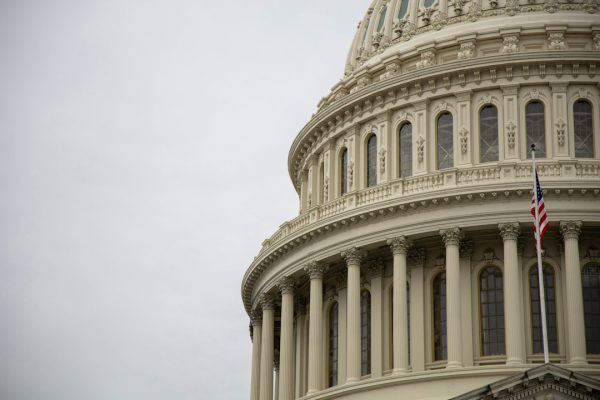
This paper on the destruction of Jerusalem and the Vindication of Jesus was originally delivered to the Reformation Society of Western New York on February 8, 2024. For readablity, it has been converted into a series of articles. A PDF version is available.
Introduction
Part 1 | Judgment on God’s House: A Central Theme of the Prophets
Part 2 | The Final Verdict: Judgment for Israel and Vindication for the Son of Man
Part 3 | AD 70 as a Sign of “The End”
Concluding Implications
In this section we will consider judgment on Jerusalem as a central theme of both the OT prophets and Jesus’ own ministry. I will argue that Jesus is not only in line with the OT prophets but brings their ministries to a climax in his prophetic messages, actions, and predictions.
Judgment on Jerusalem in the OT Prophets
It is hard to overstate the significance of Jerusalem and its temple. It was the heart and symbol of Israel’s religious, political, and economic life, a microcosm of the entire cosmos.1A comprehensive discussion of the symbolism and significance of the temple can be found in G. K. Beale, The Temple and the Church’s Mission: A Biblical Theology of the Dwelling Place of God, New Studies in Biblical Theology, vol. 17 (England; Downers Grove, IL: Apollos; InterVarsity Press, 2004) 29-50. The temple was on Mt. Zion, “the mountain of the house of the Lord” (Isa. 2:1-4). According to Ezekiel, Jerusalem was set “in the center of the nations” and at the “center of the earth” (Ezek. 5:5; 38:12). And yet, messages of imminent judgment for Jerusalem and its temple are a major component of the prophetic writings. Promises of redemption and future glory are all set against the backdrop of this judgment on Israel. The prophets were clear that Jerusalem, like all the other nations, was not exempt from God’s judgment. Israel’s utter disregard for Yahweh, evidenced in their idolatry, hypocrisy, corruption, and oppression, would result in catastrophic disaster for the holy city. The day of the Lord would not only come for Babylon (Isa. 13:6-9), Egypt (Jer. 46:10), and Edom (Obad. 15), but for Israel as well (Amos 5:18-20; Ezek. 7).
The OT prophets use a wide variety of images to describe the seriousness of Jerusalem’s sin. Jerusalem had become a whore (Isa. 1:21), a faithless bride (Ezek. 16), a city like Sodom and Gomorrah (Isa 1:10), and an Egyptian prostitute (Ezek. 23). The city was a fruitless vineyard (Isa. 5), a useless vine (Ezek. 15), a barren and withered fig tree (Jer. 8:13) that only produced bloodshed and abominations. If Israel continued to defile God’s house and turn the temple into a den of robbers (Jer. 7:8-15); if they continued to stiffen their necks (Jer. 7:25-27), God would forsake his house and make it desolate, just like the sanctuary at Shiloh in the days of Eli and his wicked sons (Ps. 78:60; Jer. 12:7; 22:5; 44:1-6; Ezek. 5:11-14; 6:14; 12:20; 15:8; 23:33).
The prophets also employed apocalyptic imagery to describe the magnitude of the holy city’s desolation. Hosea says the inhabitants of Israel “shall say to the mountains, ‘Cover us,’ and to the hills, ‘Fall on us’” when the Lord comes in judgment (Hos. 10:8). Jeremiah describes it as a tragic reversal of creation: “I looked on the earth, and behold, it was without form and void; and to the heavens, and they had no light. I looked on the mountains, and behold, they were quaking” (Jer. 4:23-24). Like the ten plagues of Egypt, the destruction of Jerusalem and its temple was seen as an act of de-creation.2See the discussion of apocalyptic language in N. T. Wright, Paul and the Faithfulness of God, vol. 4, Christian Origins and the Question of God (Minneapolis: Fortress Press, 2013), 165-175. When Jerusalem was destroyed in 587 BC, Jeremiah was vindicated as a true prophet even though the world did not come to an end.
But the good news is that, though the generation alive at the time of the prophets would face judgment (Jer. 7:29), the Lord would not make a full end of his people. Isaiah and Malachi saw that the Lord would come to his temple again to judge his people who had become his enemies, but the end would only be the beginning for Mount Zion (Mal. 3:1-2; Isa. 66:1-11). According to Barry Webb, “The death-throes of Israel as it existed under the old covenant turn out to be the birth-pangs of the new age.”3Barry Webb, The Message of Isaiah: On Eagles’ Wings, ed. J. A. Motyer and Derek Tidball, The Bible Speaks Today (England: Inter-Varsity Press, 1996), 248.
Judgment on Jerusalem in Jesus’ Ministry
Any careful study of the Gospels will reveal that Jesus regarded his ministry as not only in continuity with the OT prophets but also bringing their work to a climax in his announcement of the arrival of the kingdom.4Wright, Jesus and the Victory of God, 166-168. Like the “prophets of old” before him (Mark 6:15; Matt. 16:14), Jesus came to God’s people not only with a message of salvation but with prophetic messages, actions, and predictions of imminent judgment if the nation did not repent.5For an excellent survey of Jesus as prophet, see Alistair I. Wilson, When Will These Things Happen?: A Study of Jesus as Judge in Matthew 21–25 (Milton Keynes; Waynesboro, GA: Paternoster, 2004).
Prophetic Messages: Warnings and Woes
Part of Jesus’ prophetic ministry included denunciations of Israel’s religious leaders and warnings of impending disaster for the nation (Matt. 11:20). In his parable of the vineyard Jesus condemns the religious leaders as tenants who fail to provide the owner with fruit and instead kill his beloved son (Matt. 21:3-46; Mark 12:1-12). Speaking to the chief priests and elders, Jesus says, “Therefore I tell you, the kingdom of God will be taken away from you and given to a people producing its fruits” (Matt. 21:43, emphasis mine). Similarly, in the parable of the wedding feast, the king destroys and burns the city of those who refuse to attend the wedding feast for his son, choosing to kill his messengers instead (Matt. 22:1-10).6The parables of the tenants and the talents (Matt. 25:14-30), which are both about a master returning to his servants, are not primarily about the second coming but Jesus’ journey to Jerusalem, which he saw as “the symbol and embodiment of yhwh’s return to Zion” Wright, Jesus and the Victory of God, 639.
In Matthew 23 Jesus issues his most vehement criticisms of the scribes and Pharisees through a series of woes. They had become corrupt hypocrites, greedy blind guides, men of lawlessness, stumbling blocks to the kingdom of heaven, and children of hell (Matt. 23:1-31). After the final woe, Jesus speaks emphatically about the finality of judgment that they would experience. Because they were a brood of vipers that persecuted God’s people and prophets, all the blood of the saints shed on earth would come upon them (Matt. 23:32-36).
Throughout the gospels, Jesus uses the phrase “this generation” to refer to his contemporaries as those who failed to recognize and respond to God’s messengers (Matt. 11:16; 12:39, 41, 42, 45; 16:4; 17:17). Like the OT prophets before him, his prophetic ministry was primarily for the people alive in his day, the people to whom he was sent (John 1:9-11; cf. Jer. 7:29). This is made especially clear in Luke when Jesus says the Son of Man “must suffer many things and be rejected by this generation” (Luke 17:24-25). He is not speaking about a future generation of unbelievers, nor is he speaking generically about a particular class of unbeliever.7Of course, his warnings of judgment apply to those following in that generation’s footsteps. Rather, the emphasis is on his generation; he is speaking to the faithless and twisted generation of Jews alive in his day who opposed, rejected, and wanted to destroy him, andwho would do the same to his disciples.8Stephen picks up this theme when he accuses the same generation of not just being like the crooked and twisted wilderness generation, but also of betraying and murdering the long-awaited Righteous One (Acts 7:51-53). For a discussion of Stephen’s speech and its connection to the temple sayings of Jesus, see Steve Smith, The Fate of the Jerusalem Temple in Luke-Acts: An Intertextual Approach to Jesus’ Laments over Jerusalem and Stephen’s Speech, ed. Chris Keith, vol. 553, Library of New Testament Studies (London; Oxford; New York; New Delhi; Sydney: Bloomsbury T&T Clark: An Imprint of Bloomsbury Publishing Plc; Bloomsbury, 2017),140-189. And just as Jeremiah promised that God’s house would become a desolation if Israel did not repent (Jer. 22:5), so Jesus warned his generation that their house would be left desolate and their temple destroyed (Matt. 23:38; 24:34).
Prophetic Actions: Cleansing and Cursing
Like the prophets Hosea, Jeremiah, and Ezekiel, Jesus also carried out prophet actions which symbolized the judgment coming on Jerusalem and its temple. After his triumphal entry into Jerusalem as its long-awaited king, Jesus “went into the temple” and “looked around at everything” (Mark 11:11). Jesus is not a tourist, admiring the great buildings; he is Israel’s God who has suddenly come to his temple (Mal. 3:1). If a priest discovered a disease of mold spreading through a house, the house would be torn down (Lev. 14). I suggest this act was an inspection of the temple, a “house” which had been contaminated beyond restoration by the current regime and would need to be dismantled until not one stone was left upon another.
The next symbolic action of the temple’s judgment is Jesus cursing a barren fig tree (Mark 11:12-14, 20-21). This action “sandwiches” the cleansing of the temple incident which shows that the unsuccessful search for figs and the cursing of the fig tree serve as a picture of God’s evaluation of Israel and his judgment of the temple (cf. Jer. 8:11-13). James Edwards concludes, “The leafy fig tree, with all its promise of fruit, is as deceptive as the temple, which, despite its religious commerce and activity, is really an outlaws’ hideout (v. 17).”9James R. Edwards, The Gospel according to Mark, The Pillar New Testament Commentary (Grand Rapids, MI; Leicester, England: Eerdmans; Apollos, 2002), 340.
The most significant prophetic action that Jesus performs is the event traditionally known as the “cleansing of the temple” (Mark 11:15-19). Upon closer inspection, it becomes clear that this was a sign of judgment. First, this event alludes to Hosea, where the prophet likens Israel to a fig tree and says that God will drive them out of his house (Hos. 9:10, 15). Second, Jesus calling the temple a “den of robbers” indicates the temple was as corrupt as in Jeremiah’s day (Mark 11:17; Jer. 7:11).10See Nicholas Perrin, Jesus the Temple (Grand Rapids, MI; London: Society for Promoting Christian Knowledge; Baker Academic, 2010), 98. “The historical evidence indicates that the temple regime of Jesus’ day had made a practice out of dipping into temple funds, extorting from lower-level priests, soliciting bribes, neglecting tithes, and grossly overcharging faithful Jews requiring temple services.” Finally, the fact that the temple cleansing is sandwiched by the cursing and withering of the fig tree means “this was not an attempt at short-term reform of the system but a symbolic declaration of eschatological judgment.”11R. T. France, The Gospel of Mark: A Commentary on the Greek Text, New International Greek Testament Commentary (Grand Rapids, MI; Carlisle: W.B. Eerdmans; Paternoster Press, 2002), 438.
Another prophetic action which signaled the desolation of the temple, though not directly carried out by Jesus, was the tearing of the temple curtain at the moment of his death (Matt. 27:45-54; Mark 15:31-39; Luke 23:44-45). While this event is normally considered a sign of “open access to God”, Steve Smith persuasively argues that it is primarily a sign of the temple’s desolation and abandonment by God because each of the synoptic writers connects the tearing of the veil to a period of darkness over the land and the death and rejection of Jesus.12Smith, The Fate of the Jerusalem Temple in Luke-Acts, 131-139. The tearing of the veil “represents the end of the separation between the holy of holies and the rest of the sanctuary, not as an open way to the divine, but as a negation of the special place of the holy of holies”, 137. However, I would argue that this event represented both judgment on the temple and open access to God for all as a result.
Prophetic Predictions: Visitation and Vengeance
The prophetic messages and actions of Jesus inevitably led to predictions of Jerusalem’s desolation and the destruction of its temple (Mark 13:1-2). Because Jerusalem chose the way of violence against Rome and failed to recognize its divine visitation, the Lord would visit them in judgment (Luke 19:41-44). The temple, like the religious leaders who represented it, was a whitewashed tomb. It had become a rotting and corrupt religious system, and Jesus predicted that it would be utterly dismantled (Mark 13:1-2; Matt. 24:1-2), and that it would happen within a generation (Mark 13:30; Matt. 23:34).
The primary text for the prediction of Jerusalem’s destruction and the tribulation which accompanied it are found in the Olivet Discourse, which is arguably the most controversial passage in the Synoptic Gospels (Matt. 24; Mark 13; Luke 21). Scholars have fiercely debated how much of the discourse pertains to the destruction of Jerusalem, the second coming, and when (or if) the focus shifts between the two.13For a helpful catalog of scholars based on their views of the Olivet Discourse, see Robbie Booth, “First Jerusalem, Then Parousia: A Case for a Simple Preterist-Futurist Interpretation of Matthew 24-25” (PhD diss., Southeastern Baptist Theological Seminary, 2021), 110-115. The view argued in this paper most closely aligns with the views of Charles Quarles and R. T. France. See Charles Quarles, Matthew, Evangelical Biblical Theology Commentary (Bellingham, WA: Lexham, 2022); France, The Gospel of Mark; cf. Wright, Jesus and the Victory of God, 339-368. While this paper cannot engage in a comprehensive exegetical analysis of the discourse, I want to suggest that the literary and canonical contexts necessitate the conclusion that Jesus is primarily, though not exclusively, speaking about the destruction of Jerusalem and its temple in AD 70.
When we consider the literary context of the Olivet Discourse we see that Jesus’ prediction of the temple’s destruction in Mark 13:1-2 acts as a hinge in the narrative. It serves as an introduction to his discourse about the temple but also as the conclusion to his provocative actions in Jerusalem, his denunciation of the temple regime, and his lament over Jerusalem (Mark 11-12; Matt. 21-23). This is the context of the Olivet Discourse and the disciples’ questions about “the end.” The temple’s destruction was such a theologically significant event that the disciples connected it to his “coming” and the end of the age (Matt. 24:3). And they were right—but Jesus replies in a way so as to extend their horizons (cf. Acts 1:6-8).
If we consider the canonical context of the Olivet Discourse, we discover echoes and allusions to the OT prophets and their messages of judgment on Jerusalem and the nations. For example, Jesus’ departure from the temple to the Mount of Olives echoes Ezekiel’s vision when God’s glory departs from the city and rested on “the mountain that is on the east side of the city,” which signified the temple being abandoned and left unprotected (Mark 13:1-2; Ezek.10:18-19; 11:22-23). The language of unparalleled tribulation echoes Ezekiel’s description of Jerusalem’s fall at the hands of the Babylon (Ezek. 5).14The parallels between the Olivet Discourse and Jerusalem’s destruction in Ezekiel 5 are striking. Because of Israel’s abominations, God says “I will do with you what I have never yet done, and the like of which I will never do again (Ezek. 5:9). Israel has defiled his sanctuary (v. 11), and God will make them a desolation (v. 14).
Furthermore, the apocalyptic imagery of the sun being darkened, the moon not giving its light, stars falling from heaven, and the Son of Man coming on the clouds also comes from the OT prophets (Mark 13:24-27; Matt. 24:29-31). This language describes the historical fall of Babylon (Isa. 13:9-13), Egypt (Ezek. 32:7-8), and Jerusalem (Jer. 4:23-26). Even the Son of Man “coming on the clouds” is clearly an allusion to Daniel 7:13-14, which is a crucial text for NT eschatology. In its original context, this is not describing a “coming to earth” but a coming tothe Ancient of Days to receive vindication, authority, and an everlasting kingdom.15Wright points out the “interesting spectacle of fundamentalist interpreters taking the metaphorical language in Mk. 13:26, 30 (‘the coming of the son of man’) literally, and literal language (‘within a generation’) metaphorically. Wright, Jesus and the Victory of God, 224 n. 96.
If the literary and canonical contexts are taken seriously, and if we fully appreciate the OT imagery, this discourse must be primarily, though not exclusively, about the end of the old covenant order with Jerusalem and its physical temple at the center of the world.16The imagery of Matt. 24:29-31 is “a highly symbolic description of the theological significance of the coming destruction of the temple and its consequences.” R. T. France, Matthew: An Introduction and Commentary, vol. 1, Tyndale New Testament Commentaries (Downers Grove, IL: InterVarsity Press, 1985), 349. The apocalyptic imagery is initially a reference to the fall of Jerusalem in AD 70, as well as Jesus’ ascension, vindication, and the worldwide conquest of the gospel. Thisis the sign that the Son of Man is in heaven.17The Greek text of Matt 24:30 literally reads, “τότε φανήσεται τὸ σημεῖον τοῦ υἱοῦ τοῦ ἀνθρώπου ἐν τῷ οὐρανῷ.” These events are the sign, or proof, that the Son of Man is in heaven, seated at the right hand of the Father. However, even if the majority of the Olivet Discourse is fulfilled in the first century (Mark 13:1-31), this is not in any way a denial of the second coming (Mark 13:32-36). It is likely that this apocalyptic language can also be applied to the parousia, as the final fulfillment of Jesus “coming on the clouds” (cf. Acts 1:11). One does not need to present these “comings” as a false choice, for multiple fulfillments of prophecy is the hallmark of all biblical prophecy.
The final instance of Jesus predicting the fall of Jerusalem is on his way to the cross:
And there followed him a great multitude of the people and of women who were mourning and lamenting for him. But turning to them Jesus said, “Daughters of Jerusalem, do not weep for me, but weep for yourselves and for your children. For behold, the days are coming when they will say, ‘Blessed are the barren and the wombs that never bore and the breasts that never nursed!’ Then they will begin to say to the mountains, ‘Fall on us,’ and to the hills, ‘Cover us.’ For if they do these things when the wood is green, what will happen when it is dry?” (Luke 23:27–31).
Here, Jesus quotes Hosea to describe the severity of the judgment once again coming upon Jerusalem. Scholars are divided on whether “they” refers to the Jews or Romans. But in either case the point is clear: the tragic rejection and crucifixion of Jesus, who was innocent, is going to lead to something far worse for the revolutionary city of Jerusalem and its inhabitants.18For an excellent in-depth discussion of this saying from the cross, see Smith, The Fate of the Jerusalem Temple in Luke-Acts, 119-131.

Mitch Bedzyk serves as a pastor Emmanuel Community Church, overseeing music and Sunday Classes. He received his Master of Theological Studies from Midwestern Baptist Theological Seminary and works in IT for the NY Office of Mental Health. He and his wife, Sarah, have five children: Kya, Khalli, Oliver, Amelia, and Micah. In his spare time he enjoys reading, coffee, guitar, being an MLS fanatic and playing fantasy soccer.




